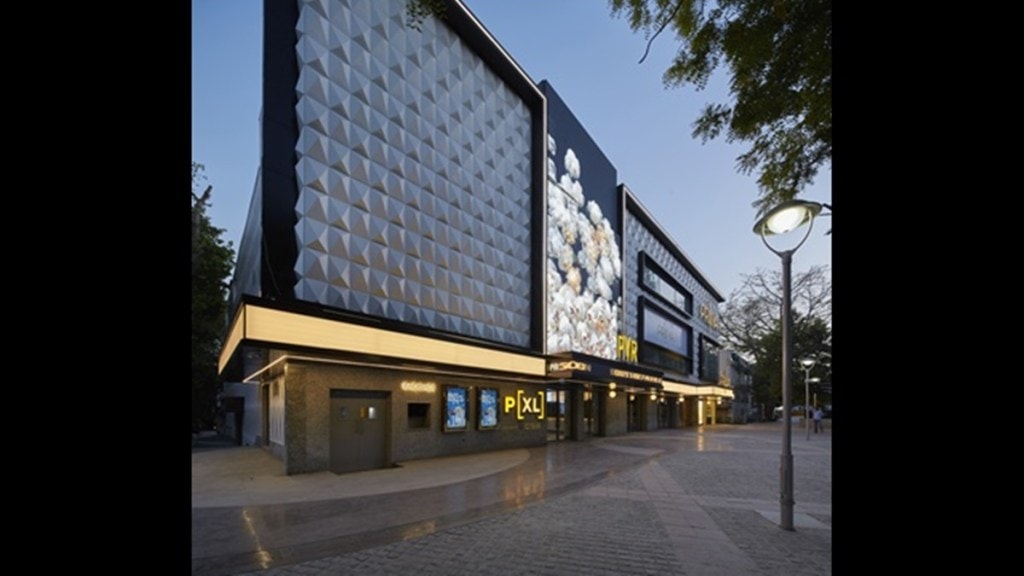Multiplex chain PVR Cinemas is in expansion mode as movie releases have resumed after the third wave of the pandemic. In February, PVR entered into an agreement with M3M, a real estate developer, to set up an eight-screen multiplex in Gurugram by FY23. The company hopes to go back to its pre-pandemic level of expansion — of launching 70 new screens annually — in FY23.
As of Q3 FY22, PVR Cinemas had opened 18 screens across Narsipatnam in Andhra Pradesh, Mumbai, Gurugram, and Jamnagar in Gujarat. On the back of highly anticipated releases like Sooryavanshi, Spider-Man: No Way Home, Pushpa: The Rise, Eternals, and 83, the company earned a revenue of Rs 642.29 crore in Q3 FY22. In comparison, the company earned Rs 923.89 crore in Q3 FY20 and Rs 63.39 crore in Q3 FY21.
Now showing
Sanjeev Bijli, joint managing director, PVR, says the company is back in business. “We plan to get back on track with our expansion. Other than the 18 screens we have already opened during this pandemic year, 23 screens will be added before the end of this fiscal.” The company has a total of 851 screens in India across 72 cities.
Before the film exhibition industry was left in limbo early this year on account of the third wave, PVR Cinemas had registered a 77% recovery. Industry analysts are expecting footfall to be robust in the coming month, with movies like Gangubai Kathiawadi, Bachchan Pandey, and Shamshera releasing soon.
Being amongst the industries that were worst hit by the pandemic, cinema exhibitors had to renegotiate rental agreements to cut losses. PVR Cinemas achieved a rental discount to the tune of 57% until December, 2021. However, when cinemas became fully operational, discounts dropped to about 5%, the company noted in its Q3 FY22 earnings report.
Pramod Arora, chief growth and strategy officer, PVR, says the company is experimenting with asset-light and franchise-owned-company-operated (FOCO) models to reduce capital expenditure. “We have piloted the asset-light model in Narsipatnam; if our development partner profits from it, we will take it to other cities.” Under this framework, the partner will bear 65% of the cost, while the multiplex brand will bear the cost of movable assets like projectors, speakers, etc. Under the FOCO model, the multiplex owner charges a royalty and provides management services. Arora believes that these models could fare well in smaller markets where the company wants to expand its footprint.
The company attempted to sweat its assets during the pandemic by launching allied services to stay in business. It launched packaged popcorn under the name PopMagic, began delivery of gourmet food like burgers and nachos through platforms like Swiggy, and also introduced a service to disinfect and clean homes. However, these ancillary verticals may not be significant revenue generators, according to analysts.
Furthermore, in 2021, PVR Cinemas also unveiled a drive-in theatre at Jio World, Mumbai, but it is unlikely, according to Arora, for more drive-ins to take off as it “may not work in any average city or location”.
Ironing out kinks
The asset-light model has its benefits, but comes with risks, too. Jehil Thakkar, partner, Deloitte India, notes that if the franchise owner is unable to maintain the standards that the brand is now associated with, then PVR Cinemas stands to lose. “PVR Cinemas has a premium positioning. It will need to choose partners who have the operational expertise to carry out the brand’s vision,” he adds.
The other area of concern that exists is the revenue that the company earns from advertising. Brands are yet to start spending on in-cinema advertising, as the cinema exhibition business continues to encounter local restrictions. In Q3 FY20, PVR’s advertising revenue stood at Rs 121.95 crore; this number in Q3 FY22, was Rs 40.9 crore. Karan Taurani, senior VP, Elara Capital, estimates in-cinema advertising to return to pre-pandemic levels only by the first half of FY24.
During the past two years, films that premiered in theatres remained in theatres for just about four weeks before they were streamed on subscription-led OTT platforms. This, too, has been a drawback for the cinema exhibition business, as a reduced theatrical window limits the scope of box office collections. Taurani estimates that filmmakers may extend the theatrical window to six-eight weeks, June onward.

